Laser-cutting Technology has become an advanced processing method in recent years. A laser cutter utilizes a high-power laser beam to cut multiple materials and plays an essential role in metal processing, automation fabrication, aerospace, and electronics. They have many edges over traditional cutting methods. For example, they allow for high accuracy and high repetition. Laser-cutting machines can reach micro-level accuracy and consistency, greatly improving product quality. Possessing high flexibility, laser cutters can be adjusted flexibly so as to be applied widely. At the same time, the machine also allows for the accurate cutting of intricate patterns, delivering more possibilities for products. To help manufacturing practitioners and individual hobbyists to understand laser cutting technology, master the key information for laser cutting machines, I write this comprehensive article of laser cutting machines for you . The guide mainly pivots the definition, working principles, types, applications, brands and industry trends to explain comprehensively so that the article can serve as an authoritative, practical reference. I hope you can understand the article better after reading my article so as to improve enterprise competition. A laser cutting machine is a kind of machine that utilizes high-power laser beams to cut multiple materials. They focus the laser onto the surface of the workpiece and utilize the high temperature to melt or evaporate the material. In this way, the cutting was finished accurately. Here is a video for you to enjoy so as to have a deeper understanding. The cutting processes are as follows: Step 1: The laser generator generates high-power laser beams which usually are infrared or ultraviolet. Step 2: The laser beams which are focused into an extremely fine ray of light by an optical system will shoot accurately on the surface of the workpiece. Step 3: The workpiece will be moved under the control of the CNC control system so that the laser beam can move along the designed paths as a way to finish the cutting. Step 4: Assist gases will be sprayed to blow off the melt so as to ensure accuracy. The key components of a laser cutting machine will be introduced in the following: As the most essential part and the heart of a laser cutting macine, the laser is the core power source of high-power laser beams. Commonly, there are CO2 lasers and fiber lasers mostly applied in manufacturing. Though both have pros and cons, What merits attention is that fibre lasers perform better in terms of accuracy, efficiency, cutting quality, lifespan and maintenance demands. An optical system incorporates reflective mirrors, focus lenses and other parts in order to focus laser beams onto the surface of the workpiece. The performance of the optical system directly influences the cutting accuracy and efficiency. The CNC control system is the main operating system which controls the movement of X, Y, and Z-axes. At the same time, it can also adjust the output power of laser cutters so as to ensue the cutting stability. You should notice that an advanced CNC control system improves the performance and stability of the machine. The cutting head, as the core component of a laser cutting machine consists of a nozzle, focus lenses and a focus tracking system. The cutting head will move according to the designed paths, and its height will be adjusted according to different materials, thicknesses and cutting methods. Premium cutting heads ensure high speed and accuracy cutting. The servo motor as the key driving part of a laser cutting machine controls the movements of mechanical components. High-quality servo motors can guarantee cutting precision, positioning speed and repeated positioning accuracy. Generally, the core components of a laser cutting machine include the laser, optical system, CNC control system, cutting head and servo motor. These machine tools’ precise coordination jointly decides the performance and cutting quality. Premium core components play an essential role in improving the laser cutting machine’s quality and accuracy. CO2 laser cutting machines use a mixture of carbide gases as the laser source. This kind of gas is activated by electricity so to generate laser beams. The wavelengths of the CO2 laser cutting machine are 10.6 microns, which belongs to the far-infrared spectral range. These kinds of machines are wildly used in non-metal processing, such as wood, plastic, leather and paper, thanks to their low maintenance costs and high benefits. However, there also remain difficulties when they cut some materials. Because metals may cause spark and ignition that damages the machine. Fiber laser cutting machines utilize a special fiber laser to enlarge and transfer laser beams. The laser has a wavelength of 1.064 microns, which belongs to the near-infrared spectroscopy range. Fiber laser cutters are suitable for metal cutting, even for some reflective metals that are hard to process for CO2 laser cutting machines. By virtue of their high efficiency, low energy consumption and maintenance costs, they boast higher cutting speed and accuracy, especially for thick metal sheets. In addition, laser cutting machines enjoying high-quality laser beams allow for preciser cutting and engraving. Laser cutting process optimization is an important step to ensure high-quality cutting. Accurate control of cutting parameters can reduce material consumption and improve the comprehensive quality of the products. Here are a few key optimization steps: Selecting the appropriate cutting parameters is one of the most preliminary steps in the cutting process. Cutting parameters incorporate laser power, cutting speed, focus point, and pass numbers. The higher the laser power, the faster the cutting speed. However, overly high power may burn or melt the material. Therefore, laser power and cutting speed should be adjusted based on the thickness and type of the material so as to optimize the cutting. Laser power and cutting speed should be adjusted based on the features and thickness of the materials. For example, cutting of relatively thick materials entails higher laser power and lower speed. Focus adjustment is with regard to the size and position of a laser focus point. Appropriate focus points ensure the minimum zone of focused laser power so to improve cutting efficiency and accuracy. While cutting, assist gas(such as oxygen, nitrogen and air) is used to blow the melt material produced in the cutting and to cool the working area and reduce oxidization. Gas flow and pressure must adjusted based on the material’s type and thickness. For example, nitrogen is usually used to cut stainless steel in order to prevent the surface from oxidization. A heat-affected zone(HAZ) is an area with a changed microstructure as a result of heat effect. Over-large heat-affected zones may affect the quality of materials. Optimized laser power and cutting speed can reduce HAZ so as to reduce heat deformation and concentrate stress. In addition, proper cooling treatment can also help reduce heat-affected zones and avoid deformation. Following the tips and steps above to optimize and adjust your machine, it’s absolutely that the accuracy and efficiency of the laser cutting can be improved and the processed materials’ quality and performance will be ensured. As a processing machine tool of high accuracy and efficiency, the laser cutter is a shiny star in many sectors. I would like to give you a thorough introduction to its glamorous achievements. If you have read the above article, you certainly know that these magical processing machines are mostly used in metal processing, such as steel, aluminium and copper. High-accuracy cutting edges and smooth surfaces produced by laser cutters have significantly improved the product’s quality and productivity. What’s more, high automation also saves many costs for manual operation and time. Actually, a laser cutter is also an efficient assistant in the automotive industry. The machine is used to cut the auto parts, such as the vehicle doors, windows and chassis. High efficiency and accuracy of which they are proud, have not only improved component precision but boosted productivity. Laser cutters also possess other advantages in the industry. They can adapt to novel designs and materials while smoothing automotive fabrication. In high-end manufacturing, such as aerospace and defence, the indomitable fighter also establishes a foothold. The machine is used to cut and process high-performance materials, such as titanium alloys, nickel alloys, and composite materials which are mainly used to make aerospace components, motors and other pivotal parts. By virtue of the contactless processing method provided by the laser cutting machine, deformation and wear are minimized. So they can meet the high requirements and standards to the industry. In electronics and electrical engineering, the laser cutting machine allows for the precise cutting of circuit boards, electronic components and other tiny parts. Their capability of high-accuracy enables them to handle intricate patterns, which makes the laser cutting machine an integral of electronics and electrical engineering. In addition, small heat-affected zones ensure the steady performance of electronic components without being affected. In relatively small industries, such as architectural and interior design, the machine plays a role. They can cut metal sheets, glass and other decor materials. Precise replication of intricate patterns in detail boosts designers to achieve special design ideas. They are also popular in rapid construction and custom design thanks to their high efficiency and accuracy. Overall, widely and deeply applied in multiple industries, the laser-cutting machine serves as an indispensable part of modern industry due to its high accuracy, efficiency and flexibility. As technology develops, laser cutting machines will applied wider and bring many sectors with revolutionary changes. Headquartered in Germany and as one of the leading manufacturers globally, TRUMPF enjoys a glamorous history and a good reputation for its innovative technology and high-performance devices. The company provides various solutions for laser cutting, including 2D and 3D laser cutting machines, which are applicable to all kinds of materials and thicknesses. Besides, TRUMPF’s laser cutting machines featuring high precision, speed and reliability are widely applied in metal processing, automation fabrication and aerospace. Bystronic, a renowned Switzerland manufacturer of laser cutting machines, famous for high-performance laser cutting equipment and automation solutions. Bystronic’s laser cutting machines are suitable for large batches of production with many types of machines including fiber laser cutting machine and tube laser cutting machine. Bystronic’s machines are favoured by the market on the strength of their high accuracy, simple operation and low maintenance costs. ADH Machine Tool, a famous manufacturing enterprise in China, carves out a niche in the international market by virtue of cost-effective solutions and rapid market response. As one of the top 5 manufacturers in China, it provides several international cooperators with various fiber laser cutting machines, including Single Table Fiber Laser Cutting Machine, Double Table Fiber Laser Cutting Machine and Dual-use Fiber Laser Cutting Machine. Take the advantages of price competitiveness, high-quality manufacturing and flexible customer service, ADH is well-received by customers and cooperators. The laser cutting machine utilizes a high-density laser beam. When it is contacted with engraving materials, the exceptionally high temperature will show up, easily igniting the flammable materials. Especially works on cutting or engraving materials like wood or some plastics. It is essential to monitor the lase cutting machine and prepare the fire suppression equipment available. Some toxic fumes and dust may occur when the laser cutting machine works, depending mainly on the cut materials. Appropriate ventilation or air filtration systems are pivotal for ensuring the operator’s safety and the people nearby. The laser-cutting machine emits intense light. If staring directly, your eyes may be hurt severely. So does the reflected light. So the safety glasses specially designed for types of lasers should be worn during the operation and supervision of the machine. The high-power lasers of laser cutting machines can lead to skin burning. It is necessary for you to adopt proper handling and safety measurements to avoid laser beams and heated materials. Laser cutters require high-voltage electrical systems. Improper handling or maintenance may result in electric shock or other electrical hazards. Following the manufacturer's guidelines and ensuring proper grounding and electrical safety measures are in place. Factors needed to be considered: some factors should be considered in purchasing the machine, including the types of material, the thickness of the material and the size of the available working area, power requirement, and your budget. Requirements for ideal location and space: the machine should be installed in an area with good air ventilation and sufficient space for operators to walk. The surface on which the tool is placed should be stable and level. Requirement for electrical: different laser cutting machine requires extra electricity. Make sure that your supplement for electricity is adequate and stable. Align the laser: this is an essential part of the setting process, which can ensure accurate and effective cutting. The laser must align with the cutting surface inside the machine and mirror. Test the laser: after aligning, you should test the machine on some sample material to check if it works. Links to software: most laser cutting machines are equipped with specific software and compatible with popular design software. Make sure the device can be appropriately linked and can be telescoped with software. Fundamental software: learn how to operate the software. This includes knowing how to input design, adjust the setting of different materials and monitor the operation of the machine. After using the machine, please clean the debris and the flammable materials from the laser cycle. It is very important to absorb debris from the cutting head and inside of the laser cutting machine regularly to avoid fire hazards. Dust accumulation inside laser cutting machine housing will significantly increase the fire hazard. The dust particles are tiny, and thus have a large surface area to volume ratio. This allows for mass air(oxygen) to always be in contact with particles. Thus, the dust is easier to flame compared with solids of the same materials. Don’ts Please do not modify or limit any safety function of the laser systems. Please do not directly observe through the optical equipment. Do’s Before using, please check the machine inside visually. If there is debris and residue, please clean the tray. Keep a first aid kit available and within easy reach. It is used to heat burning. Warning signs are necessary to inform about exposure risks during use and maintenance. In the article, a comprehensive guide is provided for you as a reference to learn what a laser cutting machine is, where a laser cutting machine is applied, and what to consider when choosing the most suitable one, etc. I hope this article might help you. By the way, if you are considering buying laser cutting machines, ADH, as one of the leaders in China in the industry, is an intelligent choice. Before deciding to buy the products, you are welcome to view product page to learn more or get a quote. Download the Infographic With High Resolution Separate Type Strapping Tool,Adjustable Strap Tool for Varying Sizes,Secure Strapping System for Transport,Rugged Separate Strapping Tool for Shipping YANBIAN LONGCHUAN PACKING MACHINERY CO., LTD , https://www.yblcmachinery.comI. Introduction
II. What is a Laser Cutting Machine?
Definition of a laser cutting machine
Explanation of the laser cutting process
Key components of a laser cutting machine
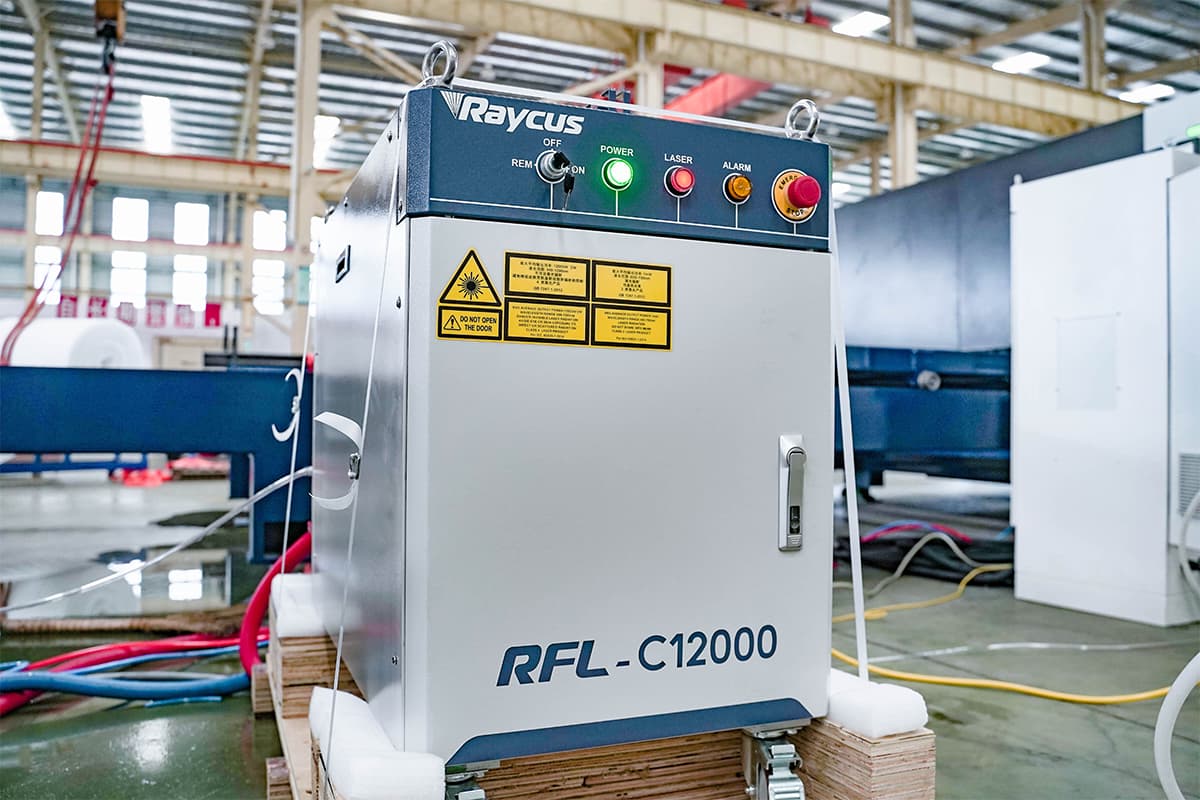
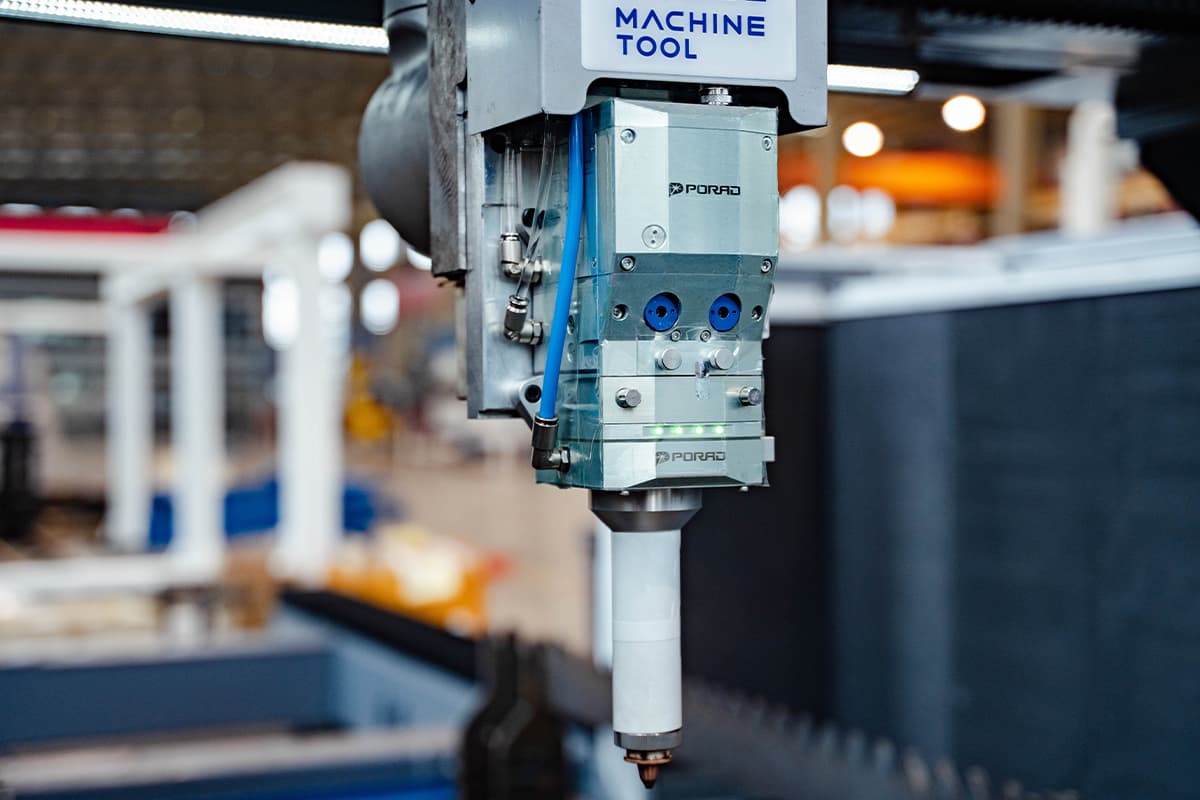
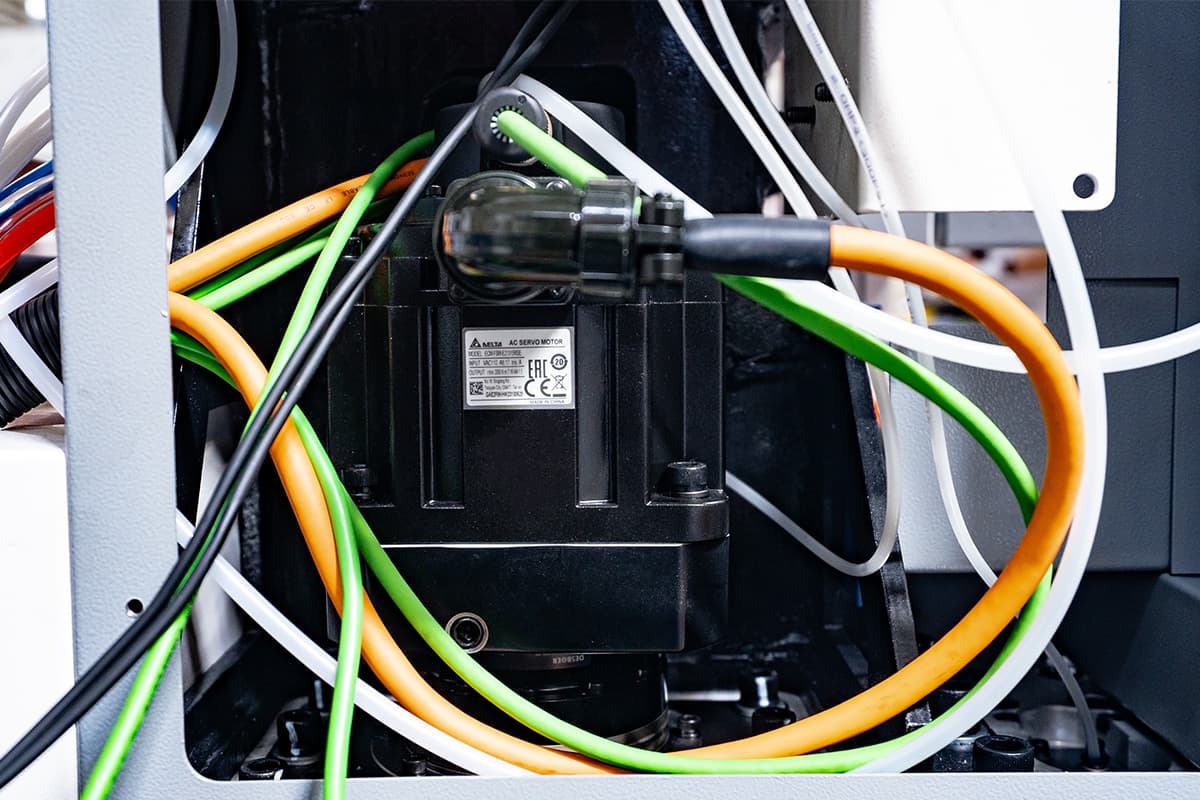
III. Mainstream Types of Laser Cutting Machines
CO2 laser cutting machines
Fiber laser cutting machines
Comparison of the two laser cutting machine types
Specialty CO2 laser cutting machine Fiber laser cutting machine Laser source mixture of carbide gases fiber laser wavelength 10.6 microns(far-infrared spectral) 1.06 micron(near-infrared spectral) Applicable non-metals(wood, plastic, leather) and thin non-metals a mixture of carbide gases Cost relatively low relatively high Maintenance simple low costs Energy consumption higher lower Cutting speed medium fast Accuracy medium High Applicable scenario non-metals cutting and small batches of production metal cutting and industrial production Laser beam quality medium high, for precise cutting and engraving IV. Laser Cutting Process Optimization
Selecting the appropriate cutting parameters
Adjusting laser power, speed, and focus
Controlling gas flow and pressure
Minimizing heat-affected zone and distortion
V. Applications of Laser Cutting Machines
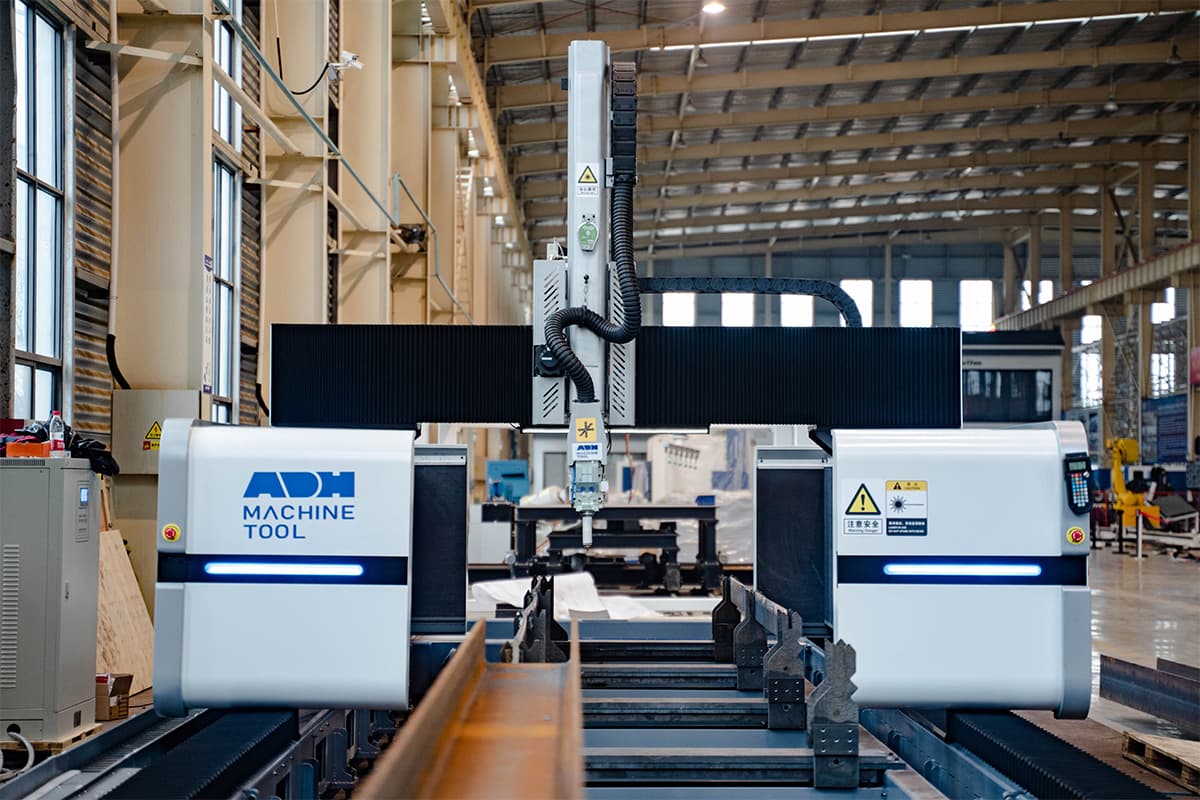
Metal fabrication
Automotive industry
Aerospace and defense
Electronics and electrical engineering
Architectural and interior design
VI.Comparing Laser Cutting Machine Brands
Leading manufacturers in the market
Pros and cons of different brands
Brand Pros Cons TRUMPF advanced technology
high efficiency and accuracy
well-known brandhigher costs Bystronic steady operation
high automation
suitable for large batches of productionrelatively large initial investments ADH Machine Tool High cost-effectiveness
simple operation and low maintenance costs
perfected after-sale servicetechnical accumulation is slightly inferior
compared to European brandsCustomer reviews and industry reputation
VII. Laser Cutting Machine Hazards
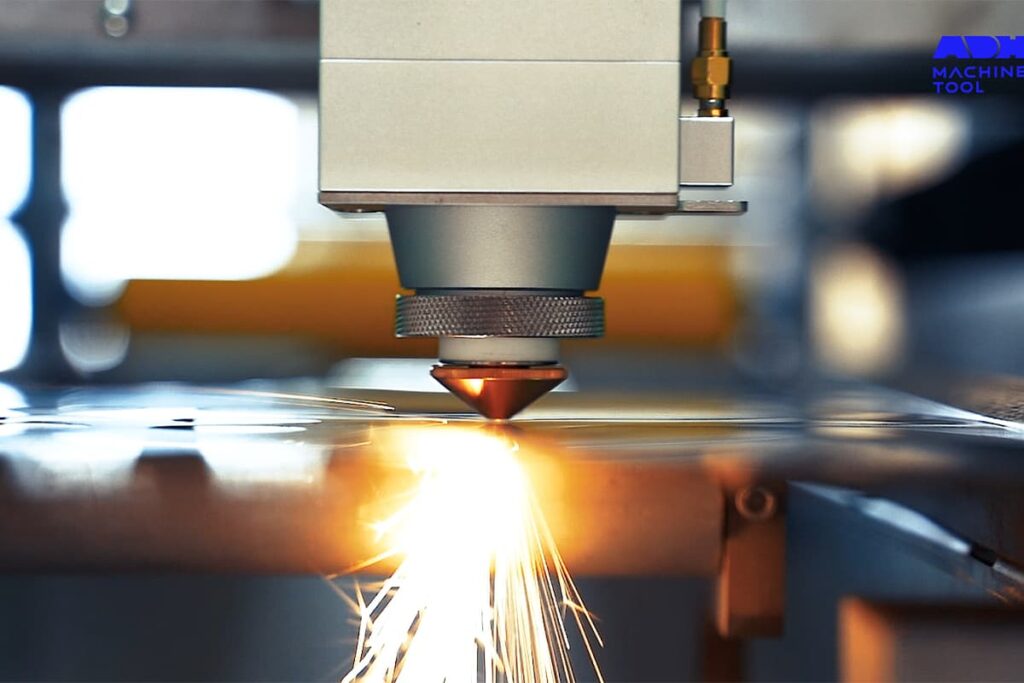
Fire
Toxic Fumes and Gases
Eye Injury
Burn
Electrical Hazards
VIII. Laser Cutter Set Up
Choose the appropriate laser-cutting machine
Installation of laser cutting machine
Calibration and initial setting
Software setting
IX. Tips for Using Laser Cutting Machine
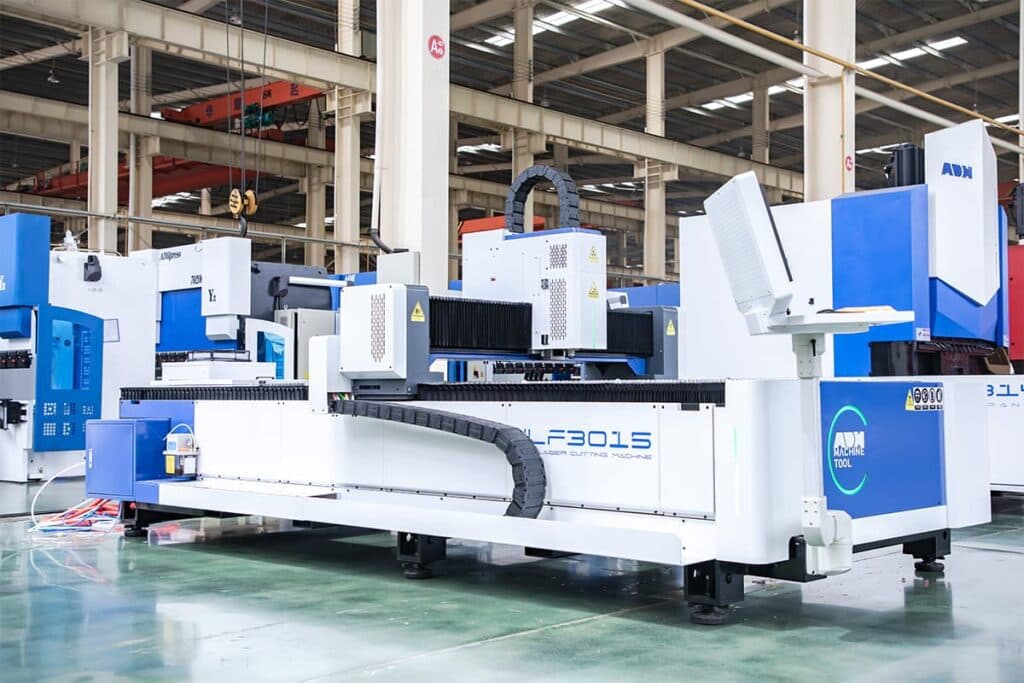
Before Use:
During Use:
After Use:
Do's and Don'ts:
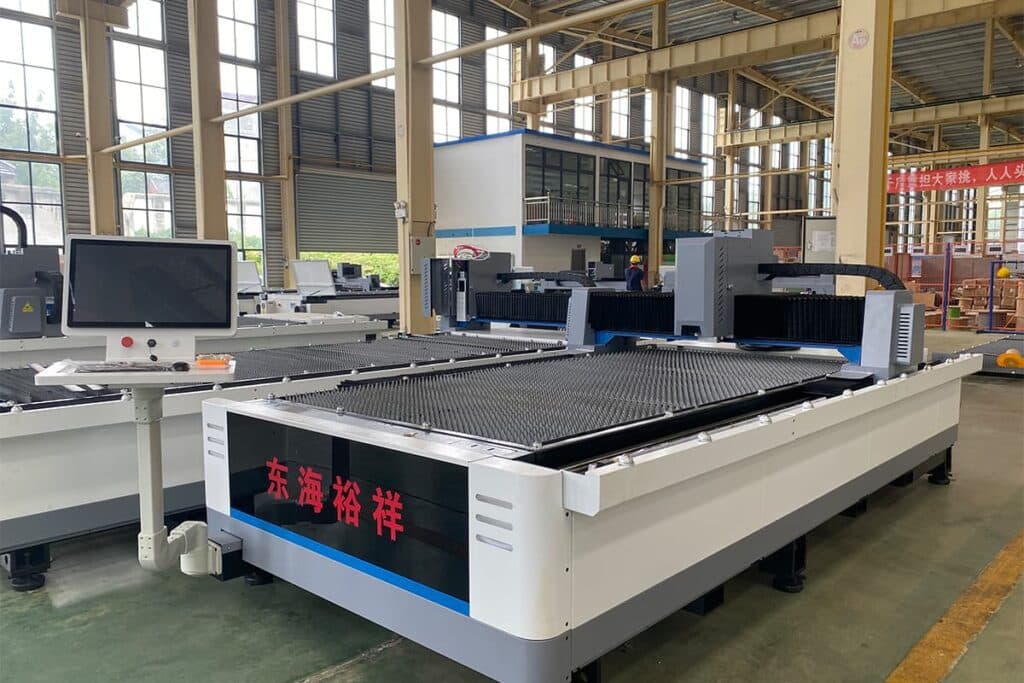
X. Conclusion
